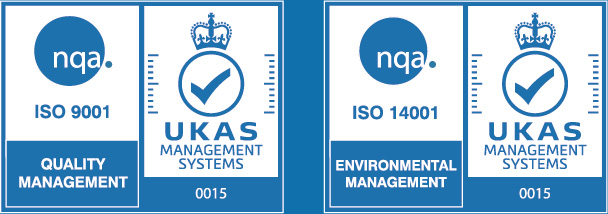Also known as asset tags, Asset Labels come in a wide variety of different styles and can be used for numerous different things. However, the common denominator regarding their use is that they are used to aid in identification.
What Are Asset Labels?
With such a broad definition of “they help identify things”, it’s helpful to have some context,after all a label assisting in the identification of products stored in a large warehouse using pallet racking will have different properties to asset labels being used to help identify samples stored in a cryogenic environment.
In order to better identify different types of asset tags, they’re often described by the material used to make them, some examples include:
- Aluminium. This material is often used when the label needs to be able to stand strong against wear and tear, as well as potentially harsh environments. For example, being outdoors. However, they are also a fantastic choice for uses when you need a label designed to resist chemicals, abrasion,or solvents; so they’re great choices for laboratories and factory environments.
- Polyester. Able to resist chemicals such as general household cleaners, oil, water, and some mild acids; polyester labels are the ideal choice when you need to attach an asset label to items made from low surface energy plastics.
However, this isn’t the only way they can be categorised. They’re also identified by specific roles that they can play, including:
- Tamper-Evident. This method of labelling is ideal for those who are concerned about people tampering with your products or if you are worried about unauthorized transfers. Common methods of tamper protection include things such as leaving the word “VOID” on the asset’s surface is the asset label is removed.
- Destructible. Another type of asset label is the destructive asset labels. These types of label are ideal for when you want to discourage unauthorised asset transfer as the labels break apart when they’re separated from the surface, preventing them from being moved in one piece.
- Maintenance Tracking. When combined with asset management software, asset tags are a great way to keep activity streamlined and ensure that maintenance is carried out at regular and appropriate intervals. If you store all your maintenance information digitally through asset management software, all the information you need available at a quick scan of a barcode. This means that instead of spending hours searching through different logs, all the data you need is easily and quickly available,all thanks to asset labels and asset management software.
- Theft Prevention. Asset labels can be given easily identifiable information that allows you to quickly identify if an item of equipment belongs to you/your organisation. This makes them a powerful form of anti-theft protection. In addition to the deterrent of a clearly visible “Property of business’ sticker” the asset label will also be able to allow you to identify it if it is returned.

Asset Labels, Frequently Asked Questions
We understand that asset labels can be quite the confusing situation, so to help you understand them in more detail,here’s a quick FAQ.
- Does Every Asset Require An Asset Label? No every asset doesn’t need to be tagged. Tagging every single asset in your business isn’t just costly, it can also be counter-productive. Think about it, if you tag everything in your business,this means that everything from your tables to your chairs, and even pencils are tagged then somebody steals a laptop, due to the large amount of assets needing to be controlled and managed, you might not notice the item going missing in a short time frame.
- Should You Use Colour Coding? If you need to manage a large amount of assets, colour coding is a fantastic strategy. It’s especially useful if you have many assets that look similar at first glance but are different in function, such as computers or laptops. If they’re running from the same case, two computers may look identical, however if one is filled with more powerful hardware and is intended for more rigorous and power consuming tasks, whereas another is less advanced and intended for administration or less power intensive tasks; the colour coding system allows for them to be easily identified from each other.The powerful computers may have a red square, whereas the less powerful computers may have a blue square.
- Do You Need Bar Codes? Bar codes are extremely useful and many would describe them as a necessity. They allow for asset labels to be checked against a database of known assets quickly with minimal human error. With regards to bar codes, the PeterLynn team can produce almost any printed barcode sticker type, from Code 39 barcode labels, UPC barcodes, EAN barcode labels, ISSN, ISBN and ITF barcodes as well as 2D barcode stickers such as Data Matrix code labels and QR codes.
However, bar codes are not 100% necessary; there are other solutions that you can use to allow for quick and easy scanning of asset tags. These include GPS,BLE, and FDID.
How Soon Can Asset Labels Be Printed?
We understand the importance of proper asset management, that’s why as a leading UK provider of custom printed labels, our standard turnaround is only 3-5 days from artwork approval. However, we will always endeavour to meet your timescale, so if you have a more urgent request, please don’t be afraid to ask.
Digitally Printed Asset Labels From PeterLynn4Labels, The Label Printing Experts
If you would like to request a quote regarding our digitally printed asset labels, simply complete the form below and submit your details. However, if you have any questions or if you would like to discuss your project with us, give us a call on 01536 400 344. Our lines are open Monday to Friday, 8:30 am to 4:30 pm.

